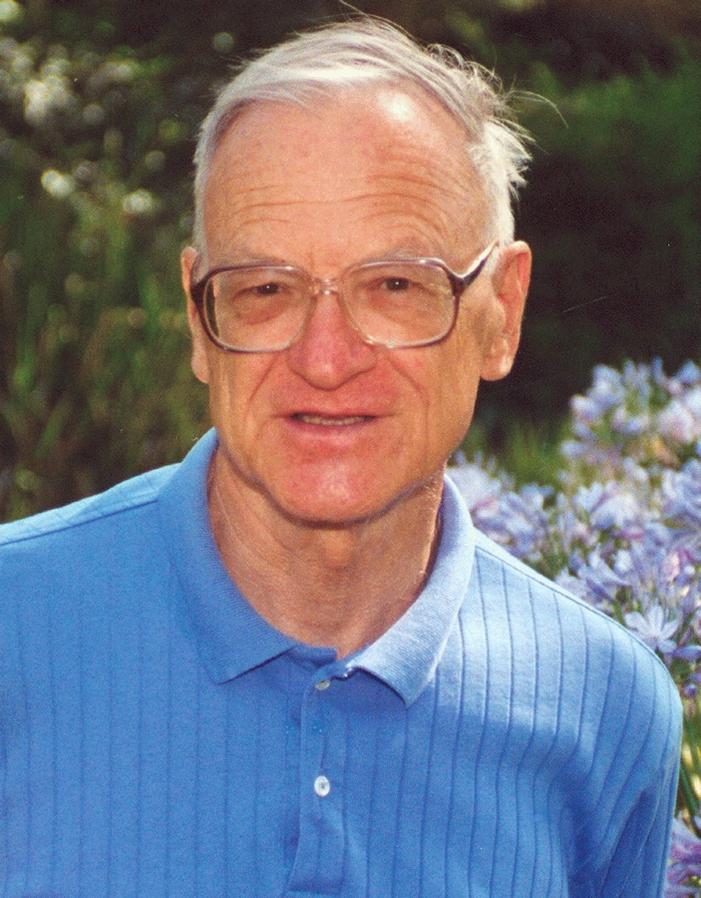
by Dr. Ray Weymann
I have done both theoretical and observational research and there have been some awkward moments in both. Early in my career I was a coauthor on a paper which involved computing the interior structure of the sun throughout its life. Standard practice in scientific research publications is to submit your paper to the Editor of a professional journal. The Editor in turn sends the paper out to be ‘refereed’ by an anonymous reviewer who passes judgment on whether the paper should be published and makes suggestions for modifications. In this case, the report was favorable but suggested some changes which I thought were nit-picking. I made these corrections for the Editor and in a separate letter to my coauthor listed them but also expressed my minor irritation about the referee as well as making a few snide remarks about the Editor, who, I thought should have ignored the referee’s comments. No big deal—BUT— I mixed the two letters up and sent the ‘snide’ one to the Editor and the ‘nice’ one to my colleague. I should point out that the Editor was not exactly Mr. Nobody, but Prof. S. Chandrasekar, a Nobel Prize winner in Physics and one of the most famous astrophysicists of the middle of the last century. As a recent phrase has it, (which will be well known to those of you who follow politics): OOPS!
An embarrassing observational moment occurred when I was observing at the University of Arizona’s 90″ telescope on Kitt Peak. I was working with a colleague and good friend, Dr. Harland Epps, one of the premier designers of astronomical instruments. Harland had designed a new instrument for the telescope and we were making the first long exposure with this instrument (it was a kind of spectrograph called an ‘echelle spectrograph’). I need to explain that this was long before the age of electronic detectors like CCDs, so sensitive photographic plates were used. You loaded the plate into the light-tight plate holder, then mounted the plate holder at the focal plane of the instrument, pulled the dark slide, and after 2 or 3 hours went back to the dark room to develop the plate and see how your exposure had turned out. In this case, after the exposure, when I went to retrieve the plate holder I found–a gaping hole. I thought that Harland had put it in and he thought that I had put it in, while all the while it was warming itself in the dark room. Another ‘oops’ moment.
A third recollection could have turned out to be more embarrassing than it did, but also involved photographic plates. I was just beginning to start a program of observational research a couple of years after getting my PhD at Princeton, which emphasized theoretical astrophysics. So, as a novice observer I was looked upon by the veteran observers with great skepticism and as an ‘all thumbs’ theoretician who probably didn’t know one end of the telescope from the other. I was scheduled for a few nights at the Lick Observatory using their (then) fairly new 120″ telescope with, again, a spectrograph using photographic plates. These photographic plates were made by Kodak and often came only in large 8″ by 10″ sizes. The plate holder for this instrument required a smaller thin piece, so it was necessary to use a plate cutter to cut the glass to size. Of course this had to be done in complete darkness. The cutter was intended to produce a straight scratch along the glass surface. If all went well, applying appropriate pressure on either side of the scratch produced a satisfying “snap” sound and a nice clean cut. But all did not go well. There was a horrifying splintery sound which I knew (and confirmed by feel) resulted in a jagged, ragged, and useless piece. I tried several times with the same result and was beginning to panic. The sun had set and it wouldn’t be long before it was time to start observing. What do to? I finally decided to swallow my pride, call one of the veteran observers to help me out and face the inevitable derision of the greenhorn theoretician-turned-observer. The gentleman I got on the other end of the phone was Dr. George Herbig, a very distinguished spectroscopist (and still active now at the University of Hawaii). I explained the problem and he came over and I prepared for mortification. I listened for the first crisp snap–but heard the same splintery sound. And again. And again. I must admit though that the sound was music to my ears. It turned out the cutter had a bad diamond and was also in need of some subtle adjustments. But George did save the day (or rather the night) and I was able to get some wonderful observations and gain some experience as on observer.
Of course I have made more goofs than these, both in the area of theory and observing. So, we are all human and make our share of mistakes. The main thing is to learn from them and not repeat them, a lesson not only for astronomers but for life in general.
Follow Us: